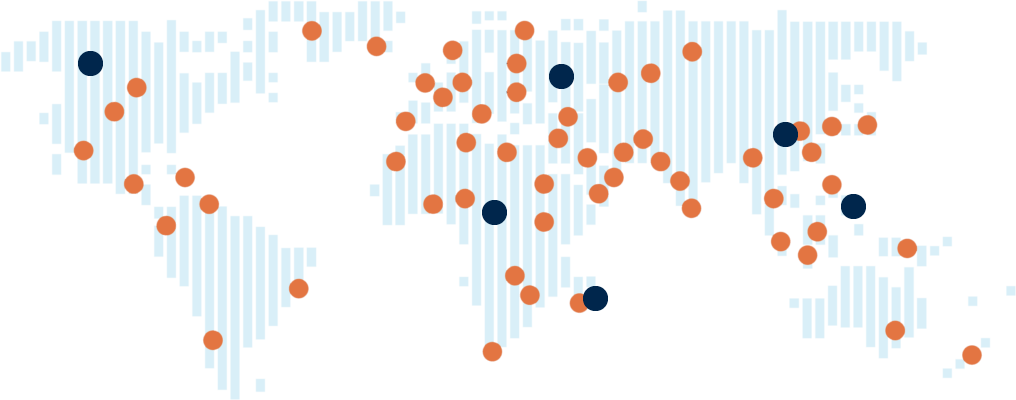MARKETS’ FOCUS MAY SHIFT TO FED POLICYMAKERS THIS WEEK
Although the global economic diary does not contain too many relevant data points for this week, financial markets will probably not be bored, as the Federal Reserve will provide more than enough information to digest. Those investors, who seek clarity on the Fed’s monetary policy (especially on the balance sheet run-off), will probably be happy to read the FOMC minutes from January on Wednesday. Furthermore, between Tuesday and Friday, there will be a plethora of speeches by Fed policymakers, who are expected to provide guidance on the how members of the FOMC think. Amongst many others, investors want to hear answers to questions such as the terminal size of the Fed’s balance sheet, the asset mix (Treasuries vs. MBSs), and duration. Should the prevailing information be of dovish nature, appetite for risk assets could further strengthen, most likely translating into EM asset price gains.

S&P 2,776 +2.50%, 10yr Treasury 2.66% +2.87bps, HY Credit Index 343 -23bps, Vix 14.91 -.81Vol
Stock markets in the US finished the week on a positive note, as the majority of stock indices gained. The S&P 500 rose 2.5%, led by energy, industrials and materials. The DXY dollar index strengthened 0.3%, while Treasury yields rose along the whole curve. Consequently, the 2-year yield rose 5bp to 2.51%, while the 10-year yield increased 3bp to 2.66%. According to the Fed funds futures, no meaningful change is expected in the Fed funds rate the next 12-18 months.
Industrial production and retail sales metrics were weaker-than-expected in January. Industrial output fell 0.6% MoM, while retail sales volume decreased 1.7% MoM.
Inflation in the US remained soft, as the headline CPI inflation hovered at 1.6% YoY in January, lower energy prices weighing on the gauge. Meanwhile the core measure – excluding food and energy prices – was stable at 2.2% YoY. Both indicators slightly surpassed the median market estimate.
In retrospect, the Fed shifting to a cautious stance in January is justified by the actual inflation statistics, as both measures indicate that inflationary pressures remained soft within the US’ domestic economy. Moderate inflation at the beginning of this year, does not, however, automatically rule out further hikes throughout 2019. Since monetary policy is a forward-looking exercise, leading indicators, such as labour market statistics, are the ones that could influence interest rate expectations.
Looking forward: The economic diary in the US is pretty much empty. No relevant macroeconomic indicators are expected to be released. Consequently, markets will most likely focus on the FOMC minutes and the speeches by various FOMC members.

Eurostoxx 3,241 +2.85%, German Bund 0.11% +1.40bps, Xover Credit Index 301 -17bps, USDEUR .885 +0.51%
European stock markets considerably rose during the week. Out of the four largest economies stock indices, the Italian benchmark increased to the greatest extent, as it gained 3.9% in USD. In contrast, the Spanish market lagged, as it rose 2.5% in USD. Meanwhile, the bond market in the Euro Area continues to foresee weak economic performance ahead, as sovereign yields (e.g. the 10-year German Bund yield at 0.1%), and inflation expectations remained at depressed levels.
Germany barely avoided to slip into a technical recession (i.e. negative quarterly GDP growth for two consecutive quarters), as the German economy stagnated in 4Q18 after contracting by 0.2% QoQ in 3Q18. The slowdown in economic activity was induced by multiple factors, such as slowing Chinese growth, trade wars, Brexit, financial turbulence, etc.
The Spanish Prime Minister has called a snap election for the 28th April after failing to pass the budget for 2019.
Looking forward: Germany releases detailed GDP statistics for 4Q18 and publishes inflation metrics for January. The UK presents the December jobs report this week.

HSCEI 11,148 -0.18%, Nikkei 21,281.85 +2.01%, 10yr JGB- 0.02% +0bps, USDJPY 110.590 +0.77%
Investor sentiment within the Asian space was mixed during the week. The broad MSCI Asia Pacific ex. Japan index went sideways; the Vietnamese market (+4.6% in USD) and Chinese ‘A’ shares (+2%) outperformed their Asian peers, while the Indonesian (-2.7% in USD) and Philippine markets (-2.7% in USD) lagged.
CPI inflation in China further slowed by 0.2 ppt, to 1.7% YoY in January. Although vegetable and fruit inflation picked up, pork prices declined as supply has started to increase. Non-food prices rebounded in January after falling in December. PPI inflation decelerated as well, to 0.1% YoY.
Fast deceleration of inflation and a cautious Fed could open the door for the Chinese central bank (PBOC) to deliver an outright policy rate cut.
Chinese export growth strongly rebounded, to 9.1% YoY in January, while imports decreased by 1.5% YoY. As a result, foreign trade surplus was USD 39.2bn.
Should there be an agreement between China and the US, the recovery of Chinese trade performance could accelerate.
Similarly to exports, M2 money supply growth gained momentum as well. The growth of M2 accelerated to 8.4% YoY. Details revealed that both corporate and household lending strengthened.
The unemployment rate in South Korea rose to 4.4% in January, vs. 3.8% in December. Labour force participation increased as well, hitting 63.5% – a new high since 2000.
The rate of unemployment rose for the right reasons, i.e. a large number of people returned to the formal labour market seeking employment. However, the current state of the South Korean economy might not be strong enough to soak up the additional labour force in the short-term.
Foreign trade deficit in the Philippines narrowed to USD 3.75bn in December (vs. USD 3.90bn in November). The decrease in the trade deficit was driven by lower prices of imported fuel. In addition, the high base in the reference period also contributed to the contraction of the deficit (i.e. higher-than-usual imports of aircraft, ships and vehicles in December 2017). Details revealed the imports contracted 9.4% YoY, while exports fell 12.3% YoY in the last month of 2018.
Headline CPI inflation in India fell to 2.1% YoY in January, to a 19-month low. The deceleration was led by fuel prices as well as by moderating core CPI inflation (5.4% YoY in January vs 5.7% YoY in December).
Should the deceleration of inflation continue in India, the probability of further monetary easing will further increase.
Malaysia’s economic growth gained some momentum from improved exports in 4Q18, real GDP grew 4.7% YoY, up from 4.4% YoY in the previous quarter. Consumer spending remained strong, while the contribution to GDP growth by government spending and investment activity was underwhelming.
Looking forward: The economic diary in Asia does not contain too many releases for the week. Thailand releases GDP growth for 4Q18, and later, the Indonesian central bank decides on the policy rate.

MSCI Lat Am 2,883 +1.11%
With the exception of the Mexican (-1.7% in USD) and Chilean (-0.3%) stock markets, most of the Latin American indices gained during the week. The Brazilian market outperformed its regional peers, as the country’s benchmark rose 2.5% in USD.
Industrial production in Mexico remained weak in December, as the industrial output fell 2.5% YoY, and stagnated in 2018 compared to the year before. Mining and construction activity were the greatest sources of weakness. Meanwhile, manufacturing production grew moderately.
The Mexican government released more details about the extraordinary support for Pemex. The plan includes:
- increasing the tax breaks for the company for 2019 from MXN 11bn to MXN 15bn (about USD 600m to USD 700m),
- the previously announced capitalization of USD1.3bn,
- 8bn in pay-outs of pension liability promissory notes.
The plan also accounts for savings of USD 1.6bn from reducing fuel theft.
Mexican financial markets became increasingly nervous after the announcement of the government’s plan, as the market perceives the steps insufficient to significantly improve the firm’s production and finances.
In Brazil, the special secretary for social security announced that the government will propose a minimum retirement age of 65 for men and 62 for women with a transition period of 12 years. The government’s pension reform plan is more ambitious than the Temer-plan, as the previous government announced a transition period of 20 years. The full text with details will be released and sent to Congress on the 20thFebruary.
Peruvian economic activity was outstandingly strong in December, as the monthly proxy for GDP growth hit 4.7% YoY, bringing the full-year figure to 4% in 2018.
The minutes from the Chilean central bank’s last rate setting meeting (when the MPC delivered a 25bp hike to 2%) claimed that economic activity regained dynamism, while inflation remained below the central bank’s expectation.
Looking forward: The Latin American economic diary for the week is not too busy. Peru will release its 4Q18 GDP statistics, and later Mexico reveals inflation data.

MSCI Africa 781 -2.20%
The negative sentiment from the South African stock market (-0.8% in USD) did not spread to other African countries. The Nigerian and Egyptian markets delivered the best performances last week within the African space, as they rose 4.1% and 2.2% in USD, respectively.
Unemployment rate in South Africa slightly decreased in 3Q18, by 0.4ppt to 27.1%. The expanded definition of unemployment (including discouraged people, i.e. who have stopped looking for work) moderated by 0.3ppt to 37% in the third quarter of last year.
Despite the promising growth momentum of manufacturing output in South Africa observed in November (+1.3% YoY), manufacturing activity stagnated in December in an annual comparison.
Real GDP in Nigeria grew 2.4% YoY in 4Q18, bringing the full-year growth rate to 1.9% in 2018. The expansion was led by the non-oil economy, where activity increased by 2.7% YoY, while output by the oil economy contracted by 1.6% YoY in the last quarter of the previous year.
Details revealed that GDP growth in Nigeria remain frail, as in one hand oil-related related activities have been consistently weakening. On the other hand, the pick-up in the non-oil sector has not been broad-based. Therefore, after the elections, the (new) government will need to deliver policies and reforms to address the inherent structural deficiencies of the Nigerian economy.
Nigerian authorities – unexpectedly – delayed its presidential and parliamentary elections for a week, citing logistical issues.
Headline inflation in Egypt was 12.7% YoY in January, somewhat higher than in December, but substantially lower than a year ago, when consumer prices rose 17.1% YoY. Core inflation ticked up as well, to 8.6% YoY, as the prices of fruits, vegetables and beverages increased faster. The inflation of products with regulated prices remained stable, at 20.4% YoY.
Egypt’s central bank delivered a surprise cut to its policy interest rates, citing a strong drop in inflation and an improvement in other macroeconomic indicators. The central bank lowered its deposit rate to 15.75% from 16.75% and its lending rate to 16.75% from 17.75%.
If inflation continues to decelerate in Egypt, the central bank will find further room to deliver rate cuts throughout the year. Lower interest rates are expected to translate into stronger lending, and in turn, higher investment activity.
Looking forward: During the week, inflation metrics from South Africa and Morocco will be revealed. Most importantly, the South African Finance Minister presents the budget on the 20th February.
This week’s global market outlook is powered by Alquity www.alquity.com




